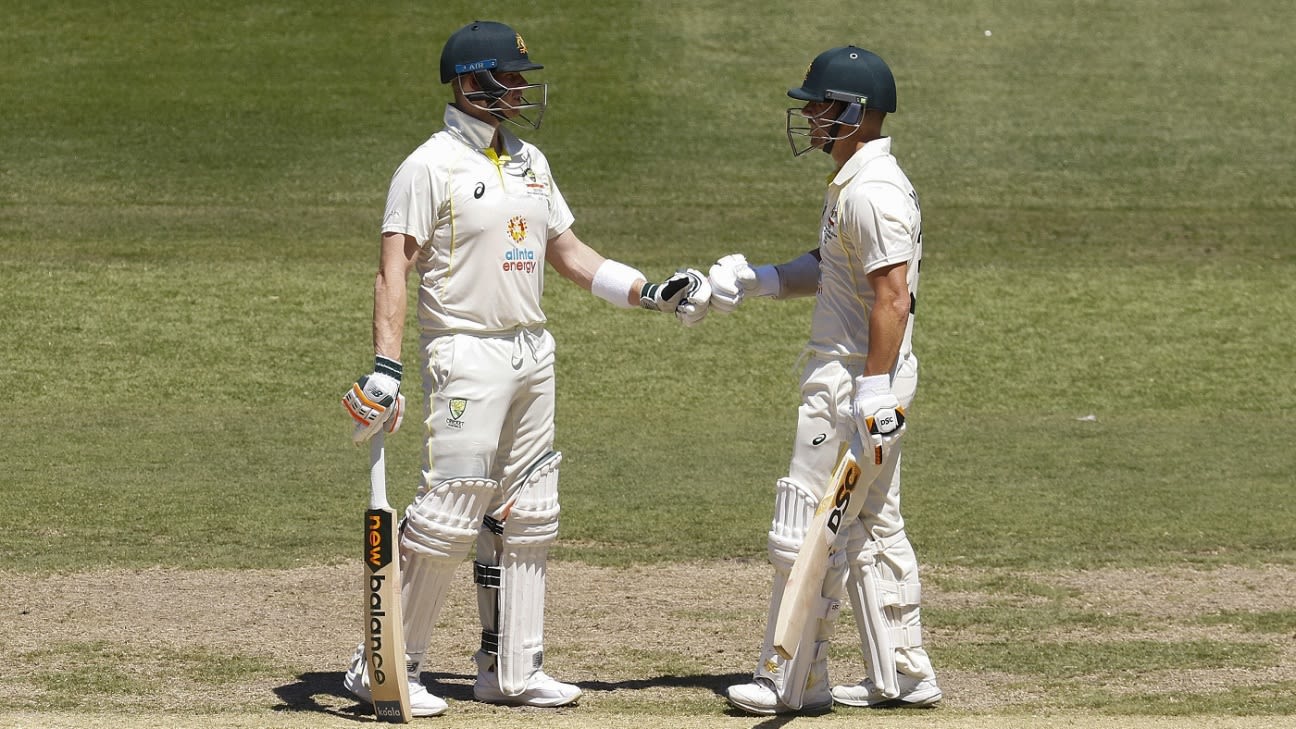Mandatory neck guards are one of a number of changes made to CA’s playing conditions ahead of the 2023-24 season including a change to the automatic six rule for balls that hit the roof at Marvel Stadium in the BBL, with the umpires now to make a discretionary decision on whether the ball was travelling over the boundary. Several other changes were made to speed up play in the Big Bash leagues, including time limits on injury stoppages and streamlining stumping reviews.
“I do not and will not wear them,” Warner wrote. “When I turn my head…wearing a StemGuard, it impedes my neck and restricts the movement of my neck when I turn around to face bowlers. I have tried a StemGuard and it digs into my neck. It is uncomfortable and is a distraction.
“With safety, the helmets are getting heavier. As a player, it is what you feel comfortable with. I go with being able to see better, and being able to move my neck.”
Smith has also avoided wearing them with the exception of a couple of occasions. He was not wearing one when he was concussed after being hit by Jofra Archer in a Test match at Lord’s in 2019. He spoke about having to wear one on his return from concussion during that series.
“I’ve tried them before and I tried them the other day when I was batting [in the nets] and I reckon my heart rate went up about 30 or 40 straight away,” Smith said. “I just feel claustrophobic. I compare it to being stuck in an MRI scan machine.
“They’re probably going to become mandatory, so I’m going to have to get used to them. I’m sure the more I wear them, the more I practice with them, my heart rate will come down and everything will be okay.”
CA has now introduced similar rules on neck guards to the ECB with umpires to enforce their use in domestic matches, but those standards will apply to Australia’s international players only in all matches both home and away, although international umpires can’t enforce them under ICC rules. Australian players choosing not to wear them will now face CA code of conduct penalties.
“Protecting the head and neck is extremely important in our sport,” CA head of cricket operations Peter Roach said. “The neck protector product has come a long way in recent years and the decision to make them mandatory comes off the back of a lot of advice and consultation with a wide range of experts and stakeholders.”
Changes to stumping reviews
In other changes to the playing conditions, balls hitting the roof at Marvel Stadium in Melbourne are no longer automatically six. The on-field umpires will now make a judgment call on whether the ball was travelling for six and if they decide it was not, it will be a dead ball. This follows several examples where top edges that went straight up into the roof were awarded six runs despite clear evidence that the ball would not have landed beyond the inner circle.
Also in the BBL and WBBL, any umpire reviews for a stumping will not include a TV umpire review for caught behind as well. The TV official will only adjudicate on the stumping. Captains will need to use the DRS to query a caught-behind decision and the review must be taken before the TV umpire adjudicates on a stumping.
There were also several new conditions added to speed up play. On-field injury assessments, with the exception of concussion assessments, are now limited to one five-minute window. Players needing further treatment will need to leave the field, meaning batters would be forced to retire hurt.
CA has also removed the Covid-19 substitute rule from their playing conditions in line with the ICC doing the same.
Alex Malcolm is an Associate Editor at ESPNcricinfo
